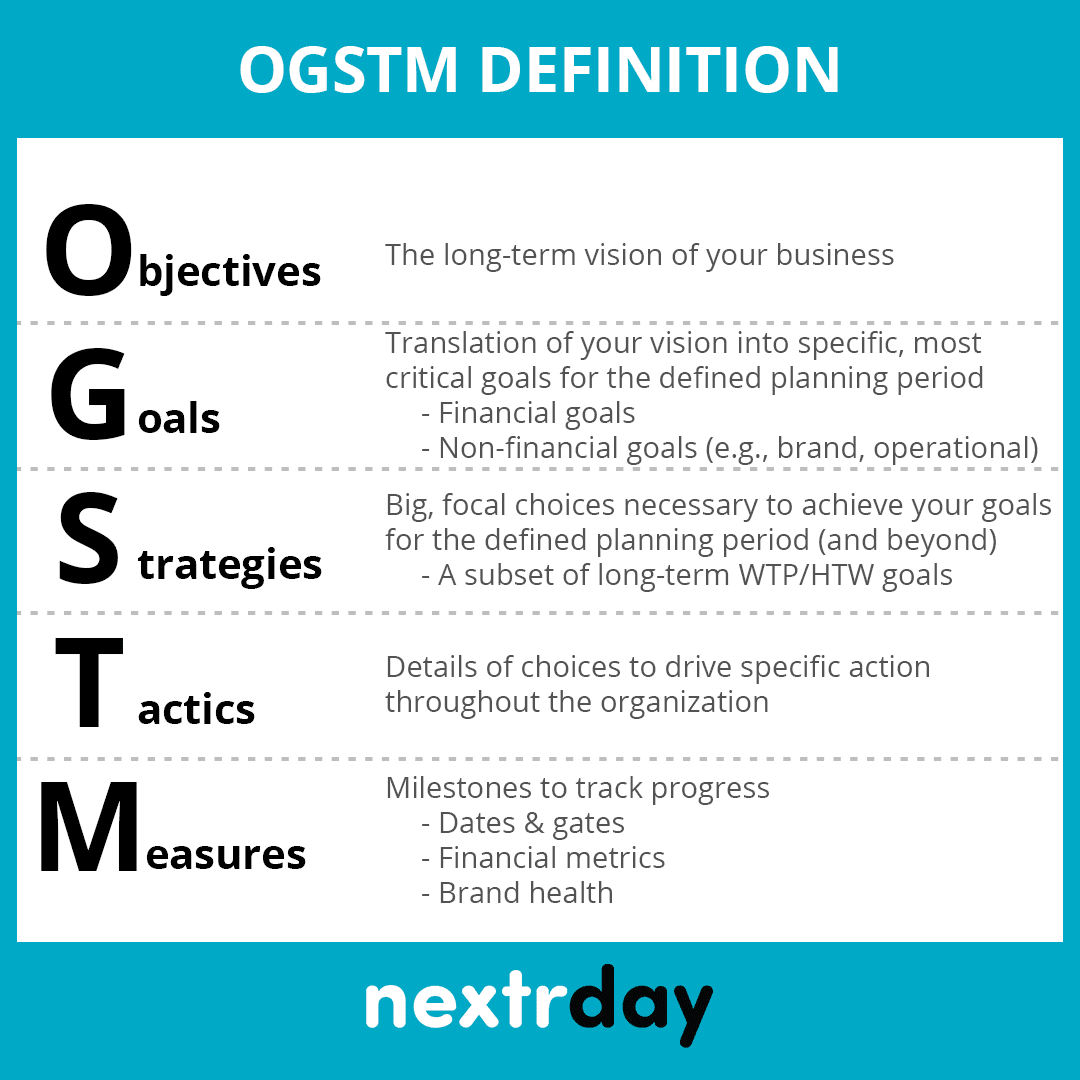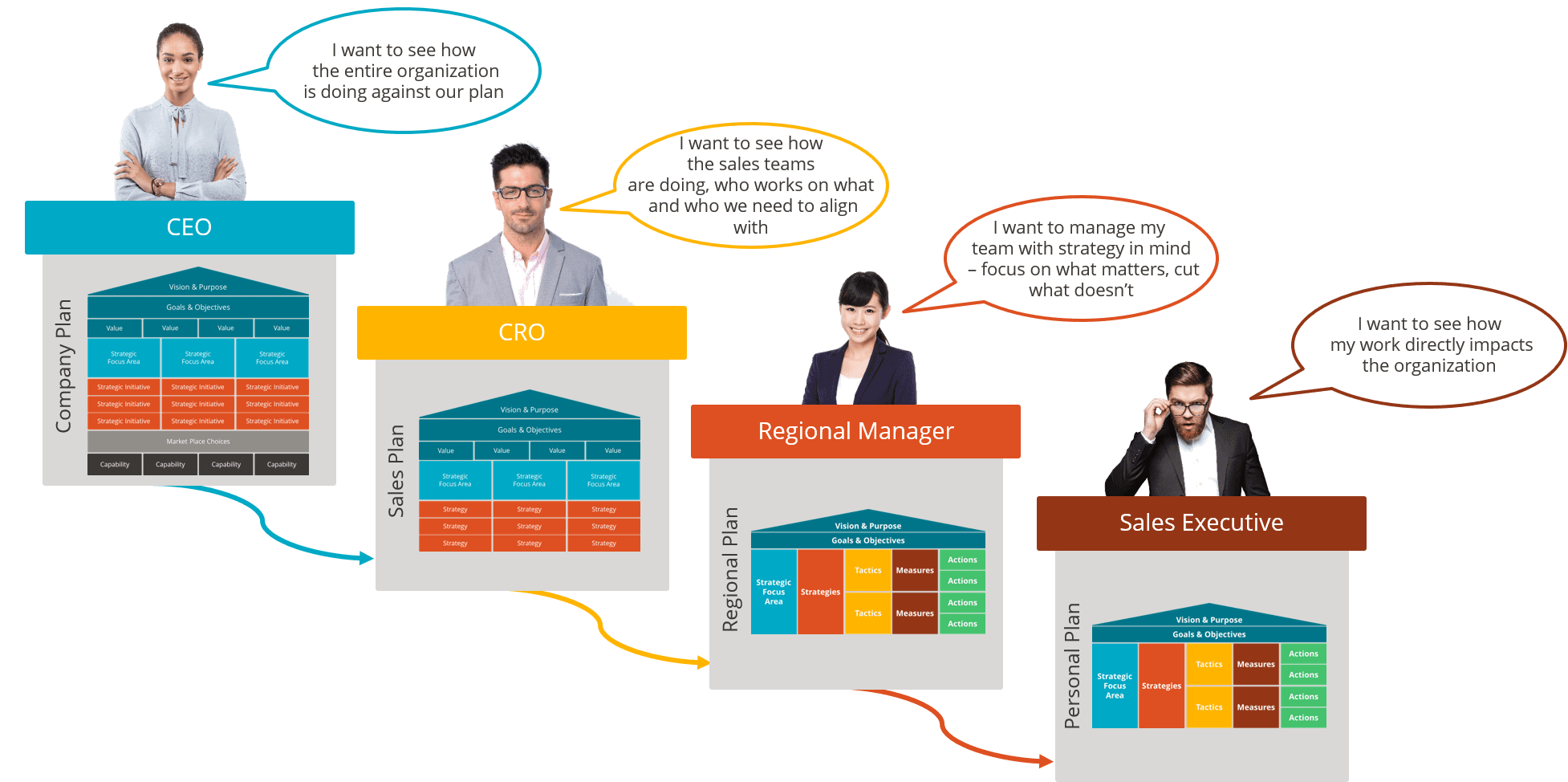OGSM or
OGSTM
“Good ideas need good strategy to realize their potential.”
Reid Hoffman
Co-founder of LinkedIn
Alexandra’s experience
Drawing from a deep well of practical knowledge and a passion for helping businesses thrive, Alexandra embodies the commitment to excellence that defines Nextrday. She stand ready to empower clients to overcome obstacles, seize opportunities, and achieve sustainable success in today’s competitive landscape.
Alexandra has a proven track record of translating strategic visions into tangible results, guiding organizations through implementation challenges, and ensuring alignment at every level. A few examples are The North Face, Align Technology, Reuters, and Smmmile store.

Alexandra van der Stap
Founder & lead consultant Nextrday
An introduction to the OGSTM approach

The OGSTM framework: a closer look
The framework outlined here can help you understand the key steps involved in guiding strategy execution along the OGSTM approach. Read about these steps in detail.

The OGSTM framework: a closer look
The framework outlined here can help you understand the key steps involved in guiding strategy execution along the OGSTM approach. Read about these steps in detail.

From strategy to execution with excellence
The OGSTM approach is an essential tool to help you execute your strategy to success. It is leveraged by small businesses and hyperscale projects across all industry domains to realize the commercial potential of ideas. We have helped multiple clients execute their strategies with the OGSTM framework – and we can help you too.




